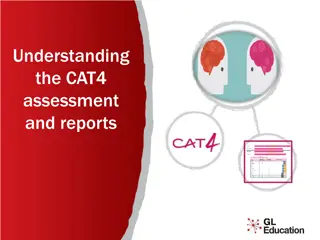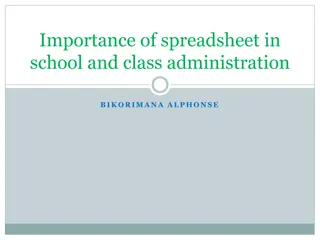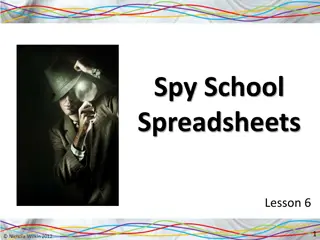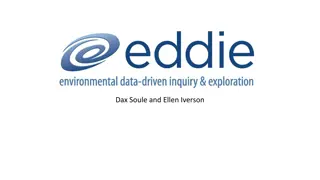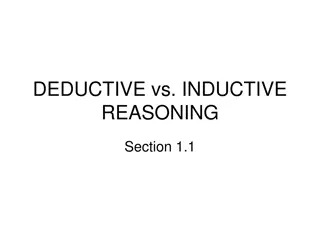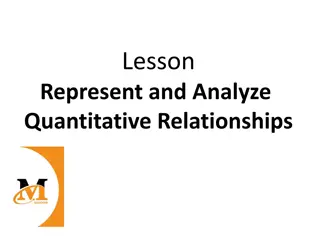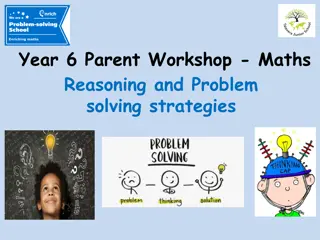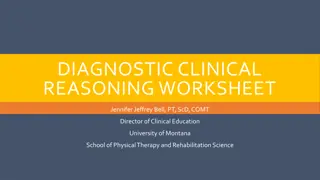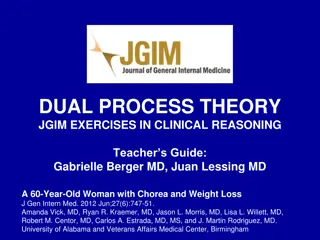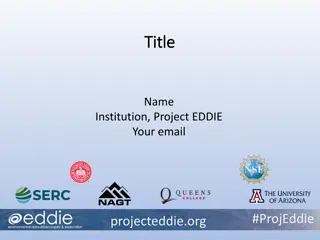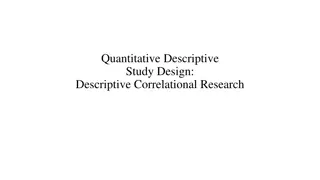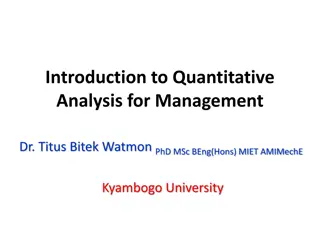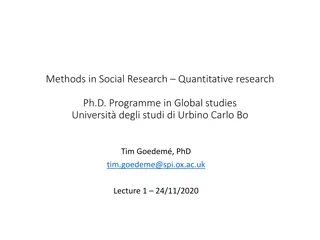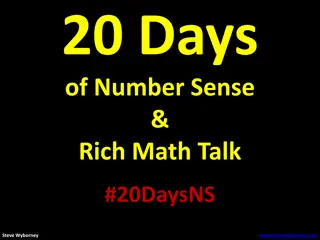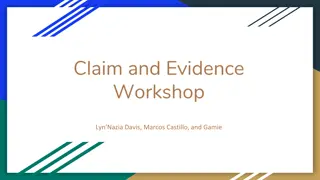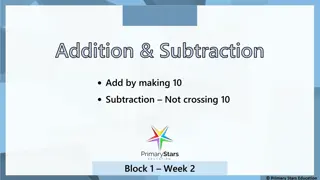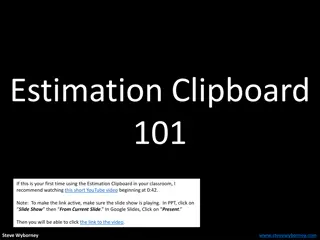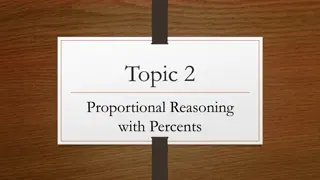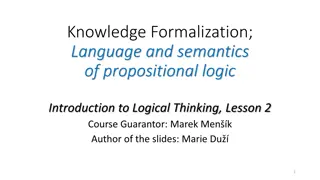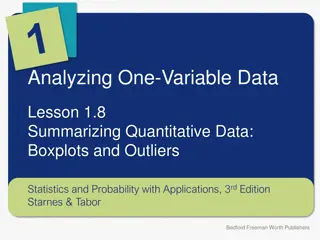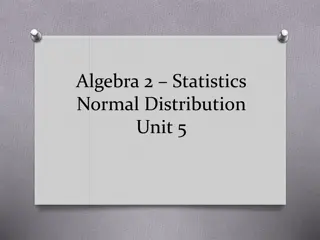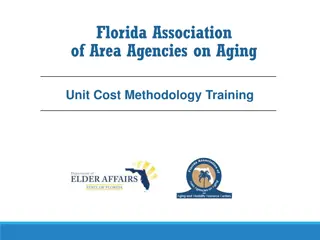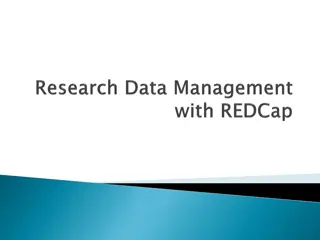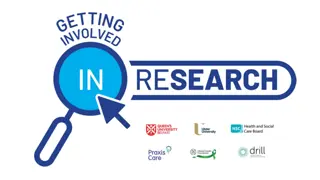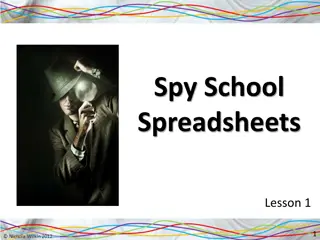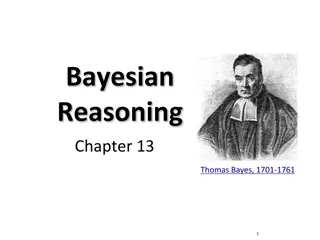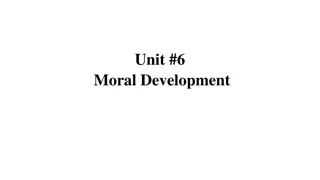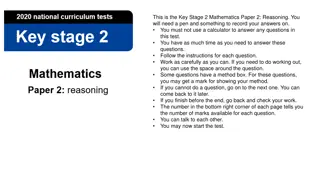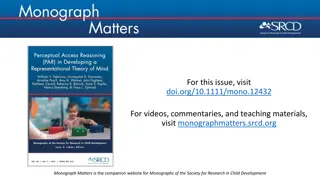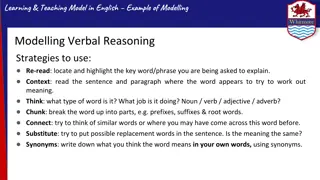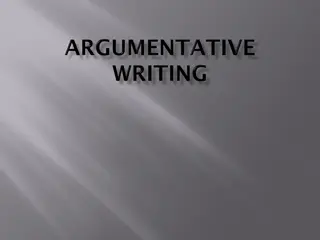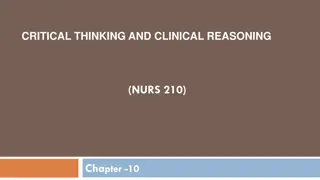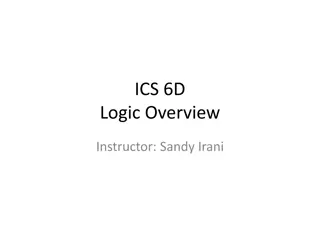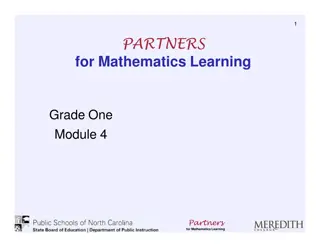Introduction to Quantitative Reasoning using Spreadsheets
Explore the use of technology and modeling cycle in quantitative reasoning. Learn to read from spreadsheets, interpret data, analyze simple formulae and graphs, estimate quantities, and create mathematical models to solve real-world problems effectively. Leveraging resources and tools integral to mathematical problem-solving, this comprehensive guide enhances your spreadsheet skills for data analysis and decision-making.
Download Presentation

Please find below an Image/Link to download the presentation.
The content on the website is provided AS IS for your information and personal use only. It may not be sold, licensed, or shared on other websites without obtaining consent from the author. Download presentation by click this link. If you encounter any issues during the download, it is possible that the publisher has removed the file from their server.
E N D
Presentation Transcript
Component 01 Introduction to Quantitative Reasoning CONTENT
USE OF TECHNOLOGY Spreadsheets Content q2 Be able to read information froma standardspreadsheet. Notes Resources Integral Resources - OCR (MEI) Level 3 IQR: Reference: Spreadsheets 1 formulae Reference: Spreadsheets 2 graphs Formulae based on the 4 rulesof arithmetic and other standard functions required by the rest ofthis specification, e.g. to the power of, squareroot. e.g. =B2*(C2+D2) =C3^4 =SQRT(A10) Examples include money, number patterns and simplesequences. e.g. =AVERAGE(A1:A9) e.g. $A1, $A$1,A$1 MEI Free Resources Integrating Mathematical Problem Solving: The mathematics for business andscience: Student loans1 Student loans2 Be able to enter formulae and data into a spreadsheet, knowing that a standard spreadsheet formulastarts with =. q3 ExternalResources: Finding Averages Using Excel Be able to interpret simpleformulae on a spreadsheet given in terms of cell references. q4 Using Excel For Simple Data Analysis Be able to copy a formula andto ensure that only the requiredcell addressesincrement. Exponential growth q5 Compoundinterest Equations in one variable, involving powers and/or roots using trialand improvement. Be able to use a spreadsheet to finda numerical solution of anequation. q6 How Much Does It Cost to beCool? Be able to use a spreadsheet todraw graphs and standard statistical diagrams and interpret graphs produced onspreadsheets. Including awareness of when graphs produced by a spreadsheet are misleading or incorrect. q7
MODELLING The modelling cycle Content Be able to identify simplifying assumptions that allow a situationto be modelled. Be able to develop or choose a simple mathematical model for a real-world situation. Notes Resources Integral Resources - OCR (MEI) Level 3 IQR: Representing the real world mathematically 3:Modelling p1 Model in words, numerically, algebraically, diagrammatically or in a spreadsheet. For example, use a simple demand curve (e.g. a linear model) topredict the change in revenue following a given change inprice. For example, compare an exponential growth model with actual population figures. p2 MEI Free Resources Integrating Mathematical Problem Solving: The mathematics of business andfinance: Statisticalmodelling Be able to use a model to make predictions or get information abouta situation. p3 ExternalResources: Malthus Be able to compare the outcomes from a model with actual data, information, experience orcommon sense and comment on the appropriateness of themodel. p4 Modelling With Spreadsheets - Planninga Festival The information may be givenin diagrammatic or graphicalform. p5 Be able to appraise theassumptions underlying a model critically. Understand that a simple model can give useful answers but may need to be improved. Mathematics AssessmentProject Includes comparing outcomesfrom twomodels. p6 Including to a person oraudience unfamiliar with the underlying mathematics. Be able to communicatemathematical results clearly and effectively. p7
MODELLING Estimation Content Notes Resources Integral Resources - OCR (MEI) Level 3 IQR: RoughlySpeaking This includes financial estimates such as conversion from a foreign currency to pounds without a calculator. Be able to make a rough estimate ofa quantity from availableinformation. e1 External Resources: Estimation of population size based on a sample Be able to use estimateswhen checking calculations. e2 Estimation of height from steplength Includes selecting and/or justifyingan appropriate level of accuracy for an answer to a calculation. MathsIsFun Introduction to Be able to make and justify upperand lower bounds for a calculation. confidence intervals Mathematics e3 Maximum, minimum, upperbound, lower bound AssessmentProject Be able to interpret and presenterror bounds or tolerances on diagrams and in writing, understanding that different levels of tolerance are appropriate in differentsituations. Error bounds may be requiredin percentageform. e4
MODELLING Algebra Content Notes Resources Integral Resources - OCR (MEI) Level 3 IQR: Representing the real world mathematically 1:Algebra Be able to represent a situation mathematically using a formula or equation. Using both traditional algebraand spreadsheetnotation. a1 Formulae will be confined tothe following cases (or simple combinations of these): ExternalResources: Improving learning in mathematics: mostly algebra polynomials Be able to substitute values into a formula given in symbols, words or as a flowchart. Formulas used in nursing calculations a2 simple rational expressions Mathematics AssessmentProject exponential growth and decay trigonometric functions (sin andcos). In simple cases using thefour operations, powers androots. Be able to solve equations and change the subject of a formula. a3 Solve more complex equationsusing trial and improvement or a graphical method.
MODELLING Geometry & measures Content Be able to recognise anduse relationships between lengths, areas, weights and volumes of similar figures to model real-worldsituations. Notes Resources Integral Resources - OCR (MEI) Level 3 IQR: Measures and scaling 1: 2D and 3D shapes m1 e.g. In the context of meetinghealth and safety requirements. Regulations to be met will be given to learners. e.g. Units of time,speed. Be able to work with time, length, area and volume to meet givenregulations. MEI Free Resources Integrating Mathematical Problem Solving: The mathematics of chemistry: Concentrations The mathematics ofbiology: Themicroscope m2 e.g. Units of speed are units of distance divided by units of time. Be able to work with commonly used units and know that quantities being compared should have the same units; this includes compound units. m3 e.g. Understanding that the units of quantities arise from the way theyare calculated. Where appropriate, conversion factors between metric and imperial units will be given. External Resources: Nuffield: Costing theJob Nuffield: Points ofView MAP: Developing a Sense of Scale MAP: A GoldenCrown MAP: Developing a Sense of Scale Be able to interpret diagrams,maps and scale drawings and be able to use them in problemsolving. m4 Representations include plans and elevations, sketches and isometric drawings. Mathematics AssessmentProject Be able to work with representations of 3-D objects in2-D. m5 Understand the termsdisplacement, distance, velocity, speed and acceleration; performassociated calculations. Displacement as directeddistance from a starting point; velocity as directedspeed. m6
MODELLING Number Content Be able to use ratio and proportionality in realistic contexts. Notes Resources n1
STATISTICS The statistics cycle Content Notes Resources Integral Resources - OCR (MEI) Level 3 IQR: Statistics 1: Introduction & collectingdata Statistics 4: Bringing it all together Be able to decide what data need to be collected in order to answer a question requiring statisticalevidence. s1 MEI Free Resources Integrating Mathematical Problem Solving: The mathematics of business andfinance: Statisticalmodelling Be able to use a suitable method for collecting data, taking ethical considerations into account, andjudge whether data are of sufficientquality. The data may be primary or secondary, and may be read offa graph ordiagram. s2 External Resources: 200 countries, 200 years, 4minutes Be able to process and present the data and so provide an answer tothe originalquestion. KS4 statistics statements: true orfalse s3 Relevant and engaging stats:teaching through statisticalinvestigations Be able to interpret the answer tothe question and decide whether it is realistic. Getting To School s4 Sample Handling Data Unit
STATISTICS Data Notes Content Resources Integral Resources - OCR (MEI) Level 3 IQR: Statistics 1: Introduction & collectingdata s5Understand and use thelanguage describing types of data. Primary, secondary;categorical, numerical; continuous, discrete. External Resources: 200 countries, 200 years, 4minutes Be able to recognise values in primary or secondary data which are unlikelyto beaccurate. s6 Relevant and engaging stats: using spreadsheets Be able to read information froma table and to construct a table to presentinformation. Includes grouping data usingsuitable classintervals. s7 KS4 statistics statements: true orfalse Ugly datavisualisation s8Understand the meaning of theterms sample and population. The idea of randomsampling. Census at School: graphit! Be able to interpret sample data in terms of possible properties of the parentpopulation. Relevant and engaging stats:teaching through statisticalinvestigations e.g. Sample mean as an estimateof populationmean. s9 Data typesresources Includes understanding thatthe average from a sample will generally be different from the population average. Understand about the variability of data and be able to describe themain features of adistribution. s10 The main features include thecentral tendency (average) andspread.
STATISTICS Statistical diagrams and measures Notes Content Resources Integral Resources - OCR (MEI) Level 3 IQR: Statistics 2: Statisticaltechniques Diagrams include: box andwhisker plots, dot plots, scatter diagrams,bar charts, pie charts, histograms, frequency charts, cumulative frequencydiagrams. External Resources: 200 countries, 200 years, 4minutes Be able to use and interpretstatistical diagrams appropriate to a variety of types ofdata. Learners may be asked tocomplete these diagrams in theexamination. s11 Standards Unit S4 Understanding mean, median, mode andrange A frequency chart resembles a histogram with equal width bars but its vertical axis is frequency. A dot plot is similar to a bar chart but with stacksof dots in lines to representfrequency. Standards Unit S5 Interpreting barcharts, pie charts, box and whiskerplots Standards Unit S6 Interpreting frequency graphs, cumulative frequency graphs,box and whiskerplots Be able to identify when a statistical diagram is misleading and explain how it could be improved. e.g. Improvement by clearerlabelling or a betterscale. s12 Relevant and engaging stats:teaching through statisticalinvestigations In appropriatecontexts. Be able to identify skewness froma histogram, frequency chart or boxand whiskerplot. Be able to interpret a scatterdiagram for bivariate data, draw a line of bestfit by eye when it is appropriate to do so and understand that extrapolation might not bejustified. s13 Positive and negativeskewness. Graphing U.S. Presidential Elections How Safe Is MyTown? Including the termsassociation, correlation, line of bestfit. s14
STATISTICS Statistical diagrams and measures Notes Content Resources Integral Resources - OCR (MEI) Level 3 IQR: Statistics 2: Statisticaltechniques Mean, median, mode. Includes grouped data and calculation or estimation for data in astatistical diagram. Be able to select and calculate appropriate measures ofcentral tendency and to interpretthem. s15 External Resources: Fundamentals of Statistics 1: Basic Concepts Tutorial Calculate range, inter-quartile range, semi inter-quartile range. Includes grouped data and calculation or estimation for data in a statistical diagram. 200 countries, 200 years, 4minutes Be able to use appropriatemeasures of spread and to interpretthem. s16 Standards Unit S4 Understandingmean, median, mode andrange Know that standard deviation is a measure ofspread. Relevant and engaging stats: using spreadsheets KS4 statistics statements: true orfalse Be able to calculate a weighted mean and recognise when it is appropriateto doso. Ugly data visualisation Census at School: graphit! Relevant and engaging stats:teaching through statistical investigations To Invest or Not to Invest The Standard DeviationTutorial
STATISTICS The Normal distribution Content Notes Resources Integral Resources - OCR (MEI) Level 3 IQR: Statistics 3: The Normaldistribution Know that the distributionis symmetrical about the mean for the population but understand that histograms for samples will usuallynot be exactly symmetrical. s18Know that the Normal distribution is a model which can be used for realdata and recognise a Normalcurve. MEI Free Resources Integrating Mathematical Problem Solving: The mathematics of business andfinance: Modelling the market (part1) Know that, for a Normal distribution, values more than three standard deviations from the mean are very unusual; know that approximately 95% of the data lie within two standard deviations of the mean and that 68% (just over two thirds) lie within one standard deviation of themean. Learners may be asked to estimate mean and standard deviation froma Normalcurve. External Resources: Fundamentals of Statistics 2: TheNormal DistributionTutorial s19 Census at School: Is our height Normal? Census at School DataTool Be able to use mean and standard deviation to calculate a z-score and use z-scores for comparison orquality control. Includes interpreting z-score as number of standard deviationsaway from themean. s20 Be able to interpret aNormal probability plot fromstatistical software. A straight line indicates a Normal distribution. s21
FINANCE The financial cycle Content Notes Resources Integral Resources - OCR (MEI) Level 3 IQR: Financial problem solving 3: Costing and problemsolving Be able to decide what informationis needed to address a financial situation. f1 MEI Free Resources Integrating Mathematical Problem Solving: The mathematics of business andfinance: Student loans (part 1) Student loans (part2) Modelling the market (part0) Know how to obtain thenecessary information. The information may be presentedin a graph ordiagram. f2 Be able to process the informationto provide one or more possible solutions. f3 External Resources: To Invest or Not toInvest Be able to decide which, if any, of the solutions areappropriate. f4
FINANCE Percentages Content Notes Resources Integral Resources - OCR (MEI) Level 3 IQR: Financial problem solving 1: Working with percentages Contexts include those outside finance. Examples of financial contexts include VAT, inflation and compound interest for savings orloans. Be able to do calculations involving percentages in context; the use of an index number to compare a numberor value to that in a baseyear. MEI Free Resources Integrating Mathematical Problem Solving: The mathematics of business andfinance: Compoundinterest Inflation The mathematics ofeconomics: Real terms f5 Expected calculations include forward and reverse percentage increase and decrease, repeated and combined percentage change and finding a percentagechange. External Resources: Standards Unit N7 Using percentagesto increasequantities MyMoneyWeek Forsooth Car depreciation from whatcar? BBC inflation tracker World Bank inflationrates Including comparison of an annual percentage depreciation (or appreciation) model with actualvalues overtime. Know how to use percentages towork with appreciation ordepreciation. f6 Be able to work out anaverage annual percentage growth (or reduction) rate for a givenchange over a period. Contexts include thoseoutside finance. f7
FINANCE Foreign exchange Content Notes Resources Integral Resources - OCR (MEI) Level 3 IQR: Financial problem solving 2: Foreign exchange In the UK, sell at 1.54, buy at1.69 means that when converting from pounds to the currency, a customer gets 1.54 of the currency for 1, but when changing the currency to pounds, 1.69 of the currency isneeded for 1. Be able to use foreign exchangerate information to make calculations, including calculations for currency exchange with commission or afee. f8 External Resources: Compare currency exchangerates Be able to decide which foreign exchange rate is most advantageous for a particular exchange withoutdoing the calculations. Deciding and justifying which exchange rate is mostadvantageous to thecustomer. f9
FINANCE Costing Content Notes Resources Integral Resources - OCR (MEI) Level 3 IQR: Financial problem solving 3: Costing and problemsolving Examples include the monthly cost of buying and running a car or renting and running ahome. f10Be able to work out the regular outgoing cost for a financialdecision. Be able to find relevantinformation fromtables. f11 MEI Free Resources Integrating Mathematical Problem Solving: The mathematics of business andfinance: Inflation Be able to use a spreadsheet to costa project or business proposal, recognising that some costs are more predictable than others over time. Learners may be asked to monitor whether a budget is being followed over time, and to calculateprojected costs from thebudget. f12 Be able to use a demand curve asa model for the relationship between price anddemand. f13 Words such as income,expenditure, budget, profit, loss, investment, tax, revenue, inflation, APR and AER. Understand and use the languageof finance. f14
WORKING WITH EXPONENTIALS Standard form Content Notes Resources Integral Resources - OCR (MEI) Level 3 IQR: Working with exponentials 1: Standard form Be able to interpret large or small numbers in standard form, including the use of a spreadsheet orcalculator. Standard form is sometimescalled scientificnotation. l1 MEI Free Resources Integrating Mathematical Problem Solving: The mathematics of chemistry: Moles External Resources: Improving learning in mathematics: estimating length using standardform l2Be able to calculate with numbers in standardform. e.g. Contexts such asastronomy, wavelengths, atoms or cells.
WORKING WITH EXPONENTIALS Exponentials Content Notes Resources Integral Resources - OCR (MEI) Level 3 IQR: Working with exponentials 2: Exponential growth anddecay Be able to explore exponential growth and decay, including interpreting output from a spreadsheet. Contexts include borrowing and saving money, bacterial growth and radioactive decay. l3 MEI Free Resources Integrating Mathematical Problem Solving: The mathematics of biology: Exponential growth The mathematics of business andfinance: Compoundinterest Be able to represent and interpret exponential growth or decay in a graph. Learners may be asked to plot orsketch exponentialgraphs. l4 External Resources: Phet radioactive dating game World incomedistribution Be able to solve equations of the forms x5 = 35 and 1.05x = 8.2. Trial and improvement for equationsof form 1.05x = 8.2. l5 Population Explosion Using an Exponential Function
WORKING WITH EXPONENTIALS Logarithmic scales Content Notes Resources Integral Resources - OCR (MEI) Level 3 IQR: Working with exponentials 3: Logarithmic scales MEI Free Resources Integrating Mathematical Problem Solving: The mathematics of biology: Exponential growth The mathematics ofchemistry: pH Learners should know that the value equidistant between a and b on a linear scale is the arithmetic mean but for a logarithmic scale it is the geometric mean . Be able to use and interpreta logarithmic scale on agraph. l6 ExternalResources: Gapminderworld World incomedistribution
WORKING WITH GRAPHS AND GRADIENTS Graphs Content Know that the independent variable is plotted on the horizontal axis ofa graph. Be able to construct a table of values for a graph from a simple formula and use it to plot thegraph. Notes Resources Integral Resources - OCR (MEI) Level 3 IQR: Representing the real world mathematically 2: Graphs andgradients g1 Includes trigonometric graphs (sinand cos) for angles indegrees. g2 MEI Free Resources Integrating Mathematical Problem Solving: The mathematics of economics: Real terms Be able to use a graph to constructa table ofvalues. g3 Includes graphs representing motion along a straight line, time series graphs, step graphs, periodicgraphs, graphs of exponential growth and decay and piecewise graphs. ExternalResources: Improving learning in mathematics:mostly algebra Be able to work with graphs drawn from a variety ofcontexts. g4 The movingman Recognise graphs of directand inverseproportion. Be able to linearise the graph ofa relationship where the dependent variable is directly proportional to some function of the independent variable. Understand the relationship between a straight line graph and the formula connecting the variables graphed. g5 e.g. Plot y against to investigatea relationship of the form. g6 g7
WORKING WITH GRAPHS AND GRADIENTS Gradients Content Be able to find the gradient of a straight line graph and interpret it in context, taking account of thescales on the axes and using appropriate units. Notes Resources Integral Resources - OCR (MEI) Level 3 IQR: Representing the real world mathematically 2: Graphs andgradients Includes finding units for thegradient from units on theaxes. g8 ExternalResources: Improving learning in mathematics:mostly algebra Be able to estimate the gradient of a curve at a point by drawing a tangent and interpret it as a rate ofchange. Includes e.g. kinematics graphsand growthcurves. g9 The movingman
RISK Probability Content Notes Resources Integral Resources - OCR (MEI) Level 3 IQR: Probability and risk 2: Probability Probability and risk 3: Probabilitytrees Be able to identify relevantequally likely outcomes in appropriate contexts. u1 Includes understanding when outcomes are not equallylikely. Be able to count equally likely outcomes in appropriate contextsand hence estimate aprobability. Includes listing and use of tree diagrams to find number ofoutcomes. External Resources: Gerd Gigerenzer onrisk u2 Screening tests from Be able to estimate probability from long-run relativefrequency. u3 Understanding Uncertainty Be able to interpret two-way tables and use them to calculate orestimate probability. u4 Understand the difference between dependent and independent events and be able to calculate probability in simplecases. u5 Contexts include games ofchance and risk of suffering fromdiseases. Be able to work with a tree diagram when calculating or estimating a probability, including conditional probability. Learners can choose to work with either frequencies or probabilities in treediagrams. u6
RISK Risk Content Notes Resources Integral Resources - OCR (MEI) Level 3 IQR: Probability and risk 1: Risk Understand risk given as a probability or as 1 in n or as a description such as once in nyears . Includes moving betweenthese forms. u7 External Resources: 2845 ways of spinning risk Be able to interpret a riskassessment, understanding that it involves measures of both likelihood and impact. Paling perspective scale: a logarithmic scale forrisk u8 How risky is life?
Component 02 Statistical Problem Solving CONTENT
PROBLEM ANALYSIS Strategies for problem solving; Selecting a model; Inputs Content Notes Resources Integral Resources- OCR (MEI) Level 3 SPS: The Problem Solving Cycle - The long and short ofit Is this a valid argument? Be able to formulate a problem ina way that lends itself tostatistical approaches. There is no exclusive list of problems; they may be drawn from a varietyof contexts. s1 Learners will be expected to makeand identify approximations and simplifications that allow them to tackle aproblem. e.g. The Normal distribution orthe uniformdistribution. e.g. Drawing a line of best fit or usinga hypothesistest. s2Consider differentstatistical approaches to aproblem. MEI Free Resources Integrating Mathematical Problem Solving: The mathematics of psychology: Correlational study Take your partners Music and maths s3 Be able to select an appropriate standard distribution as a model. s4Recognise where a standardstatistical procedure may beused. Be aware of any modelling assumptions involved in using a distribution or procedure that hasbeen selected. ExternalResources: Problem Solving Approach in Statistics resources s5 This includes identifying and selecting suitable parameters, and collecting relevantdata. s6Be able to identify what inputs a model requires. Be able to design a procedurefor collecting the necessary input datafor amodel. Understand the sources of variabilityin data and their implications in the context of a model and itsinputs. s7 Natural variability, experimental error or samplingerror. s8
PROBLEM ANALYSIS Inference Content Notes Integral Resources - OCR (MEI) Level 3 SPS: Are we equal? - Correlationand HypothesisTests null hypothesis, alternative hypothesis significance level, p-value Understand the process of hypothesis testing, including using the associated vocabulary. 1-tail test, 2-tailtest MEI Free Resources Integrating Mathematical Problem Solving: The mathematics of psychology: Correlational study Take your partners Music and maths criticalvalue h1 criticalregion acceptance region, rejectionregion. The mathematics of biology: Statistical testing inmedicine Recognising when a large data set is representative of the whole population. Be aware that large data sets can be representative of underlying populations and can be used todraw conclusions. ExternalResources: IQ Tests - What's YourHypothesis? h2 e.g. Using visual displays, summary values. Benford'sLaw
DATACOLLECTION Sampling Content Notes Resources Integral Resources - OCR (MEI) Level 3 SPS: Money Making Movies - Sampling Methods Experiment Design - Love or football? Sampling methodsinclude: opportunitysampling simple randomsampling External Resources: Populations and samples resources stratifiedsampling Know and be able to use suitable sampling methods in appropriate contexts. s9 quotasampling Non-random sampling resources clustersampling Random sampling resources self-selectedsampling. Fundamentals of Statistics 3:Sampling Tutorial
DATACOLLECTION Information sources Notes Content e1 Be able to call on factualgeneral knowledge. Resources Integral Resources - OCR (MEI) Level 3 SPS: Experiment Design - Love or football? The Problem Solving Cycle - The long and short ofit Is this a valid argument? Quantities such as thefollowing: Estimates of adult height,weight and other bodymeasurements Be able to make reasonable estimates of quantities met in everyday life without additional information. e2 The time an adult would taketo perform an everydaytask. ExternalResources: Reliability and validity resources Graphs in theMedia When familiarising themselves with the pre-release data learners should use a variety of informationsources. Be able to find and use relevant information from a variety ofsources. s10 Be able to evaluate critically information in public statementssuch as news reports and political comments. Be able to understand accounts of statistical work done by others and comment on itsquality. e.g. Conclusions drawn fromdata, statements involvingpercentages. s11 s12
PROCESS AND PRESENTATION Raw data Content Notes Resources Integral Resources - OCR (MEI) Level 3 SPS: The Problem Solving Cycle - The long and short ofit Is this a valid argument? Be able to select suitabletechniques for processing rawdata. Typically these data will have been obtained from asample. s13 An outlier is an item which is inconsistent with the rest of thedata. ExternalResources: Are YouSuited? The term is sometimes applied todata which are: The Standard DeviationTutorial Be able to clean data including dealing with missing data and outliers. s14 at least 2 standard deviationsfrom themean Cleaning Dirty Data Height Investigation S1 at least 1.5 inter-quartile range beyond the nearer quartile. Application OfNumber
PROCESS AND PRESENTATION Graphs, charts and summary measures Content Notes Resources Integral Resources - OCR (MEI) Level 3 SPS: Problem Solving Cycle - The long and the short ofit Is this a valid argument? e.g. Standard statisticaldiagrams, Cartesiangraphs. e.g. Mean, standard deviation,median, inter-quartilerange. Be able to select suitable data displays and summary measures to show the main features of rawdata. s15 External Resources: Graphing U.S. Presidential Elections e.g. Index numbers derived fromdata. (Learners will be given sufficient guidance.) How Safe Is My Town? To Invest or Not to Invest The Be able to use data displays tocheck whether distributions being used are realistic. e.g. A histogram, frequency chart or Normal probability plot to check a distribution is approximately Normal. s16 Standard DeviationTutorial
PROCESS AND PRESENTATION Parameters and inputs; Calculations Content Notes Resources Integral Resources - OCR (MEI) Level 3 SPS: Measures of Location andSpread Linear Transformation Problem Solving Cycle - The long and the short ofit Is this a valid argument? Use standard statistical notationfor samples. s17 Be able to use sample data toestimate the parameters of a distribution orthe inputs for a procedure ormodel. Includes variance andstandard deviation. s18 Be able to use the statisticalfunctions of a calculator to find the meanand standarddeviation. Most calculators have two formsof standard deviation; eitheris acceptable. s19 External Resources: Spot the error Descriptive Statistics Music Festival News story Texts Mr and MrsAverage Understand the use of a datumlevel as a base for measurementor calculation. s20 Know how the mean andstandard deviation are affected bylinear transformations. Use in change of units and originfor measurement. s21 Be able to substitute input values into a model orprocedure. s22
PROCESS AND PRESENTATION The Normal distribution Content Notes Resources Integral Resources - OCR (MEI) Level 3 SPS: The Normal Distribution and Probability Plots - Too short to be afootballer? Be able to use the Normaldistribution as a model and recognise when it is likely to be appropriate to doso. u1 MEI Free Resources Integrating Mathematical Problem Solving: The mathematics of business andfinance: Modelling the market (part1) Be able to standardise a value from a Normal distribution with a given mean and standarddeviation. Standardisedscores. u2 ExternalResources: Fundamentals of Statistics 2: TheNormal DistributionTutorial Use the Normal distribution to estimate population proportions in the context of aproblem. Using software, calculator functionsor statisticaltables. u3 Census at School: Is our height Normal?
PROCESS AND PRESENTATION The test Content Notes Resources Integral Resources - OCR (MEI) Level 3 SPS: Chi-Squared Hypothesis Test - Don't Drink andDrive Including calculating the contributions of individual cells to the teststatistic. The null hypothesis is that the classifications used for the rows and columns areindependent. MEI Free Resources Integrating Mathematical Problem Solving: The mathematics of biology: Statistical testing inmedicine Be able to apply the hypothesis test to data in a contingencytable. h3 Tables of critical values will be provided. ExternalResources: Calculating Expected Frequencies in Two Way Tablesresources Chi-Squared Tests forTwo-Way (Contingency) Tables resources This may involve considering the individual contributions to the test statistic. Be able to interpret the results ofa test. h4 Chi-Squared Tests of Goodness ofFit resources Contingency Analysis of Prison Inmates andStaff
PROCESS AND PRESENTATION Bivariate data; Spearman s rank correlation; Product moment correlation Content Notes Resources Integral Resources - OCR (MEI) Level 3 SPS: Are we equal? - Correlationand HypothesisTests Association, correlation, line of bestfit, dependent variable, independent variable. Know the vocabulary associated with bivariatedata. b1 MEI Free Resources Integrating Mathematical Problem Solving: The mathematics of psychology: Correlational study Take your partners The null hypothesis is that there isno association between the variables. Both 1-tail and 2-tail tests will be tested. Know how to calculate Spearman's rank correlation coefficient andcarry out hypothesis tests usingit. b2 Tables of critical values will be provided. External Resources: Pearsons Correlation Coefficient resources Spearmans Correlation Coefficient resources Be able to use suitable technology to find Pearson s product moment correlation coefficient and tointerpret the correlationcoefficient. Learners may be asked to calculateit using calculator functions for a small dataset. b3
REPORTING/INTERPRETATION Interpretation; Checking; Evaluation; Communication Content Be able to interpret theproposed solution in terms of theoriginal problem. Be able to interpret the result ofa hypothesis test in terms of theoriginal problem. s25 Recognise when the proposed solution isunreasonable. Be able to identify and commenton possible sources of bias or errorwhich may have affected the solution to a problem. s27 Recognise when the approach taken needs to be refined orreplaced. s28 Be able to propose a refined ornew approach. Recognise that a goodenough solution to a problem can savetime and money compared to a more accuratesolution. Recognise when additional data collection would enable a better solution to a problem. Be able to communicate the solutionto someone who understandsthe problem. Notes Recognise the uncertainty ofthe outcome. Resources Integral Resources - OCR (MEI) Level 3 SPS: The Problem Solving Cycle - The long and short ofit Is this a valid argument? Are we equal? - Correlationand HypothesisTests s23 s24 External Resources: How old is yourheight E.g. make reference to the samplingor experiment. s26 HeightInvestigation The best songever Maui's Dolphin: Uncovering a new subspecies s29 s30 s31
Do you have any questions and want to talk tous? If you need specialist advice, guidance or support, get in touch by: 01223553998 maths@ocr.org.uk @OCR_Maths
We value your feedback We value your feedback


